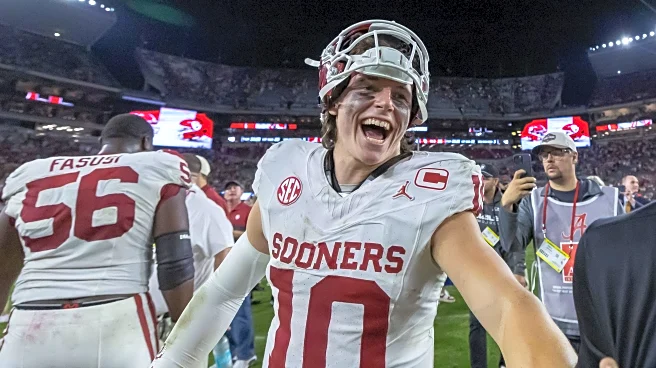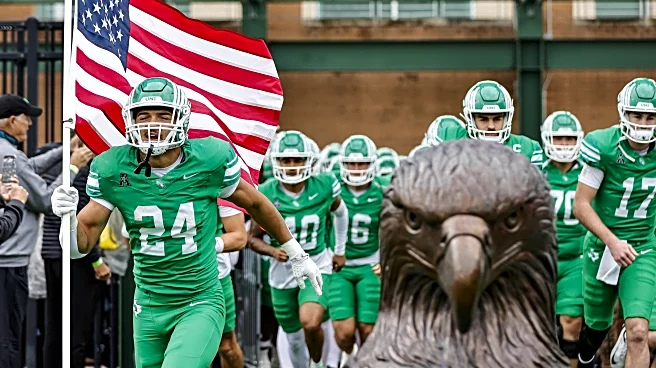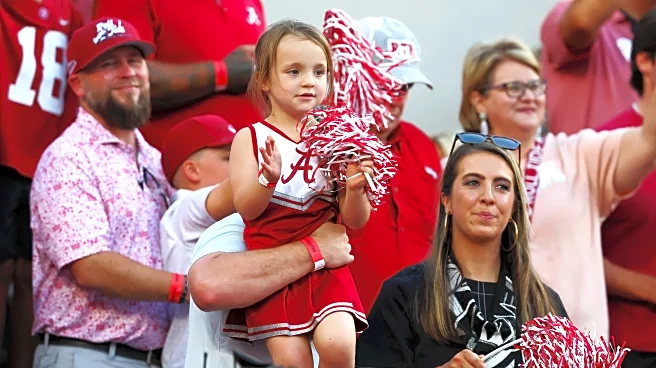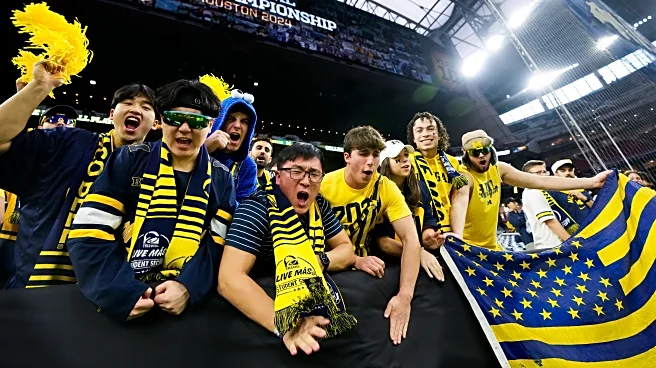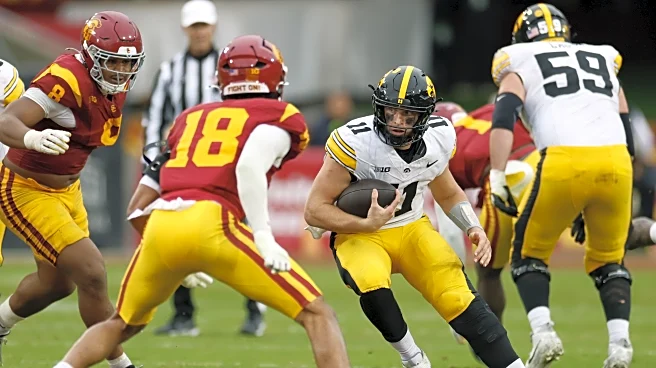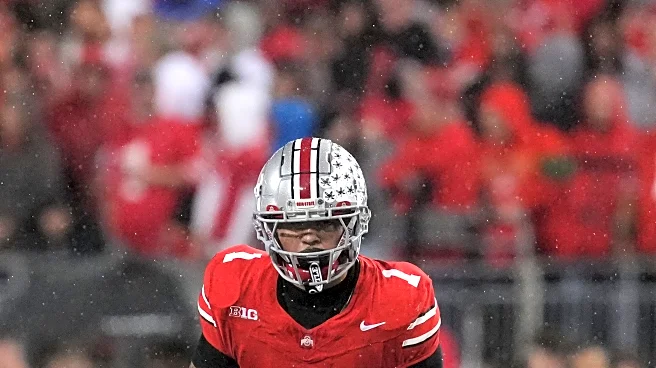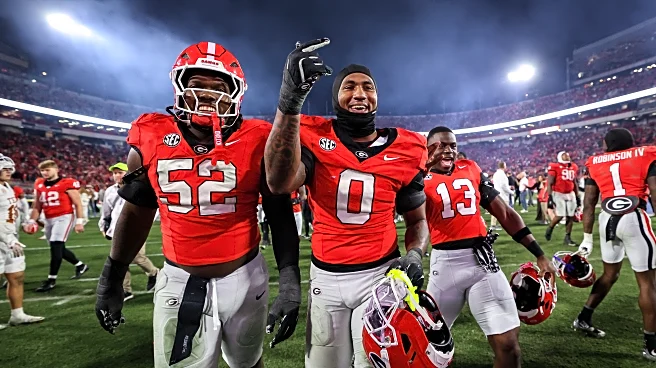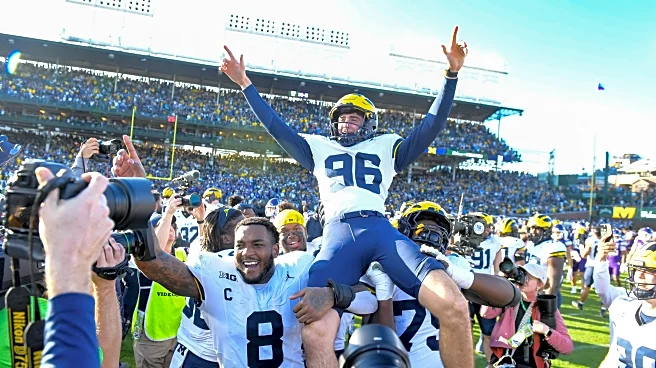You know the folks south of the Mason-Dixon line are starting to feel threatened when they turn on the propaganda offensive against a team outside of their beloved footprint where it just means more. We have seen the media blitz building over the past few weeks, and it has only intensified since one of the South’s favorite children lost a second game, putting them in a precarious postseason position.
However, despite coordinated anti-Ohio State campaign, the Buckeyes (10-0) remained No. 1 while the Indiana
Hoosiers (11-0) held onto the No. 2 spot in the rankings. Texas A&M stayed in third place despite nearly falling to 3-7 South Carolina, with No. 4 Georgia (9-1) and No. 5 Texas Tech (10-1) rounding out the top five.
The other Big Ten teams in the rankings included Oregon (8-1) at No. 7, USC (7-2) at No. 15, Michigan (7-2) at No. 18, and Illinois (7-3) at No. 21. Additionally, the Buckeyes’ season-opening opponent, the Texas Longhorns (7-3) fell to No. 17 following their loss to Georgia.
So, Ohio State has holds wins over two ranked teams (Texas and Illinois) with a matchup against a third set for next week, and a potential fourth if they make it to the Big Ten Championship game; admittedly not the most daunting schedule ever, but nothing equivalent to a Conference USA schedule. Nonetheless, the SEC mouthpieces on social media and four-letter cable networks have been coming for Ohio State talking about how the Buckeyes are “the least-tested No. 1 team in the history of college football.”
First off, settle down, Mr. Orlovsky; until you can give me a full strength of schedule breakdown of the 1919 Centre Praying Colonels, let’s maybe hold our horses.
Since when did not trailing in the second half become a bad thing for a team trying to win the national title? What makes it even funnier is that ESPN’s own Strength of Record metrics have Ohio State at No. 3 and their Strength of Schedule is only at 50, not like they are at the bottom fo the FBS or anything.
As I said on Twitter (which certainly got under the skin of some SEC fans), this very well might just be a case of the reason that Ohio State hasn’t been tested is the fact that no one is capable of testing them. Obviously I can recognize that OSU’s schedule is not at the top of the CFB pile this season, but let’s also not pretend like just because there is a number next to a team’s name that that makes them inherently better.
Polls and rankings are inherently self-fulfilling. If a team beats an overhyped opponent, they get the benefit of the initial errant ranking; thus making the win look even better than it would have if no rankings were involved. And I guarantee that the same talking heads complaining about OSU being undefeated against a “cupcake” schedule will be the same ones waxing poetic about how the sport has been ruined by rankings when Miami doesn’t make the CFP despite beating Notre Dame who does.
You either have to take the side of what happens on the field matters, or you don’t. The Buckeyes are dominating their opponents by every imaginable metric, including those that adjust for opponent and schedule strength. That is why it’s not just the poll voters and CFP committe members who have OSU at No. 1.
Currently, FanDuel has the Buckeyes as the odds-on favorite to win the national title at +190. IU is their closest competitor at +500, with Texas A&M at +750, followed by Notre Dame (+900), and Georgia (+1000).
Interestingly, FanDuel also has odds for teams to make the CFP title game. Currently, the Buckeyes are the only team viewed as the odds-on favorite to play for the title. OSU comes in at -115, while IU is at +200, A&M is +290, UGA is +420, and ND is +490. So, clearly, in the minds of the bookmakers, there continues to be a fairly sizeable gap between Ohio State and everyone else.
Look, I get why ESPN employees and SEC fans want to try and knock Ohio State off its perch atop the sport. For decades, the SEC has been the king of the sport, and Disney spent billions of dollars to broadcast the conference’s games, and SEC fans have attached their entire identity to being a part of the dominant conference. But now that legally paying players has leveled the field, and teams from cold-weather states are beginning to retake control of the sport, they have to fight back however they can.
Is Ohio State the best team in college football? I think so, but we’ve got two more weeks of the regular season, conference championship games, and a 12-team playoff to find out for sure. So rather than lashing out because there is a new king of the college football mountain, maybe fans and paid propagandists alike should focus their energies elsewhere, because clearly the coordinated smear campaign didn’t do much to sway the committee.


